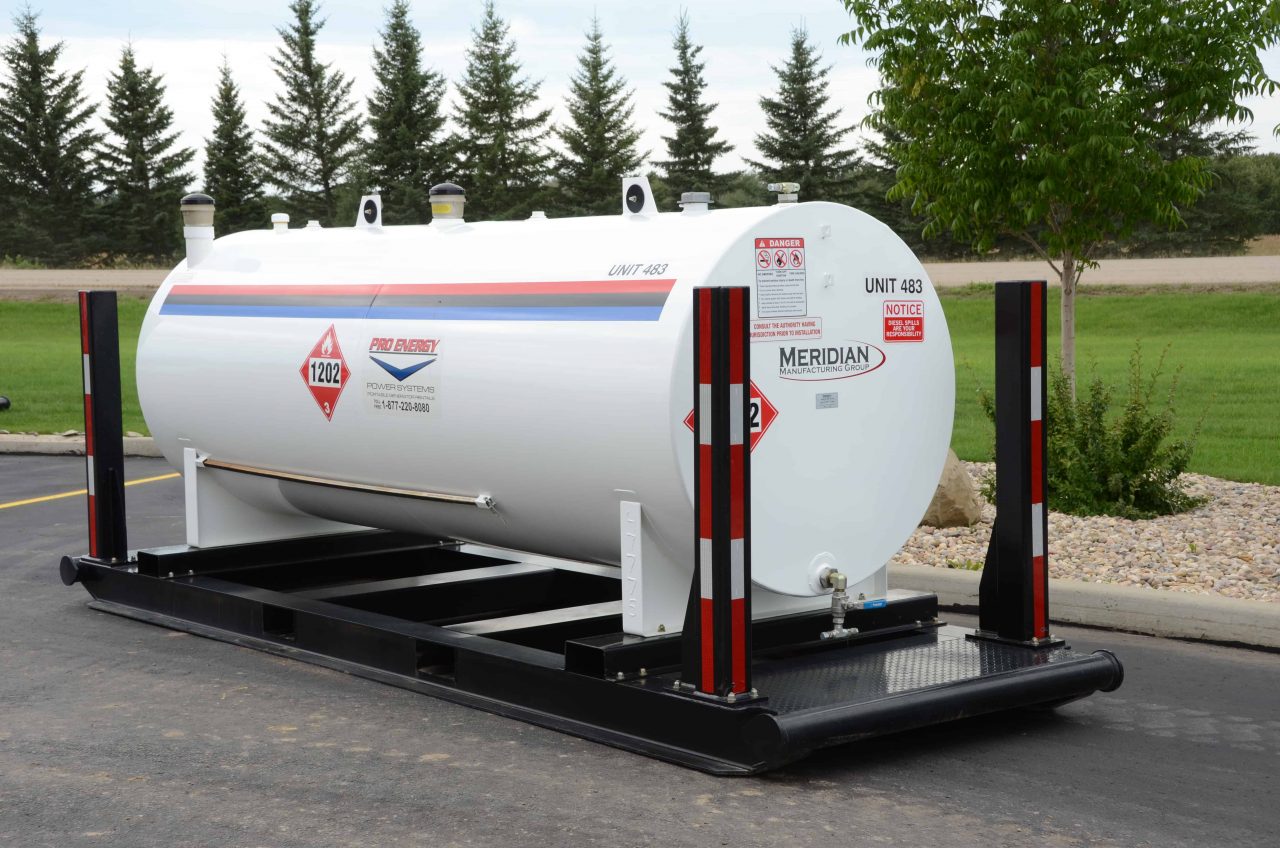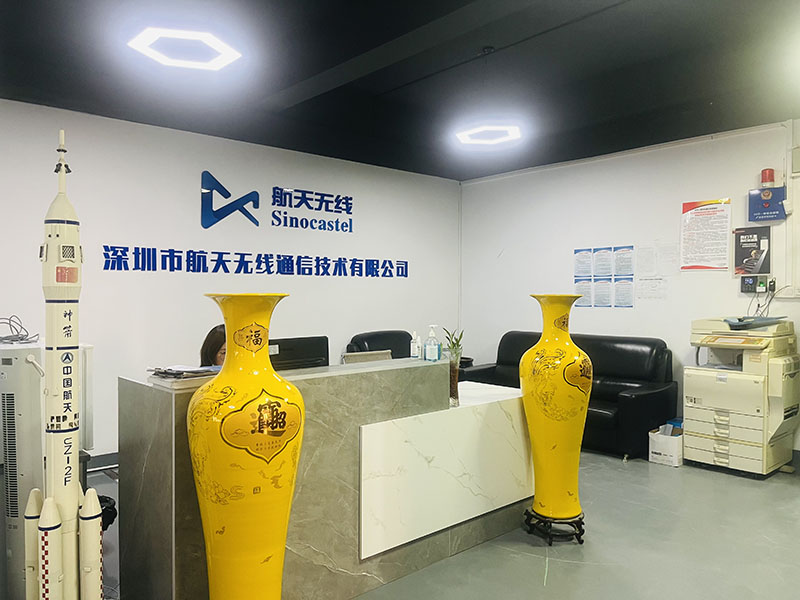WHAT ARE A TRUCK’S BLIND SPOTS?
Trucks have a different mirror system than cars. While we can see most of our surroundings in our cars, truck drivers have limited vision with their mirrors, where they are unable to see some zones around the truck, as shown below.
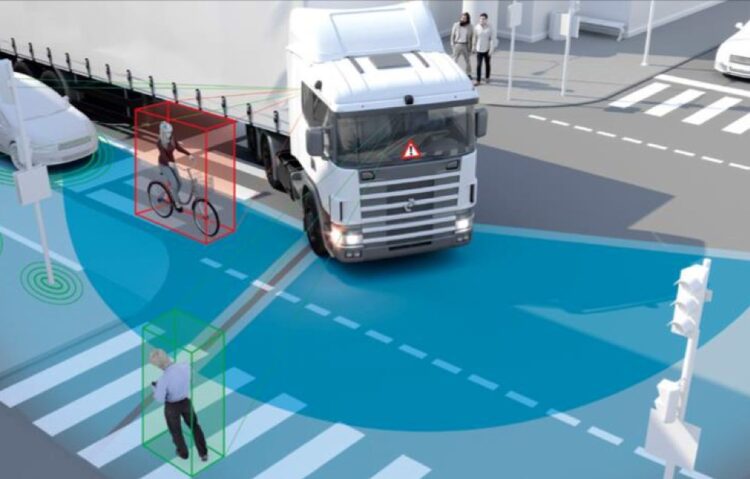
Identifying Truck Blind Spots
Large trucks have several massive blind spots.
The three main types of truck blind spots, or “no-zones,” are:
• Side No-Zone – Blind spots for trucks are worse on the sides. The blind spot on the right side of a truck can run the entire length of the trailer. Due to this large blind spot, drivers are always advised to always pass trucks on the left. While there is a blind spot there as well, truck drivers are trained to expect passing motorists there.
• Rear No-Zone – This blind spot extends almost 200 feet from the back of the truck. When motorists follow trucks too closely, it can be difficult for the truck driver to see them. Therefore, it’s important to stay far enough behind so the trucker can see you in the side-view mirrors.
• Front No-Zone – Because truck drivers sit in elevated cabs, they typically cannot see objects that are close in front of them. If a motorist gets too close, the hood of the truck may block them from view. This blind spot typically extends about 20 feet ahead of the truck. Merging directly in front of a truck may put you at serious risk for a collision.
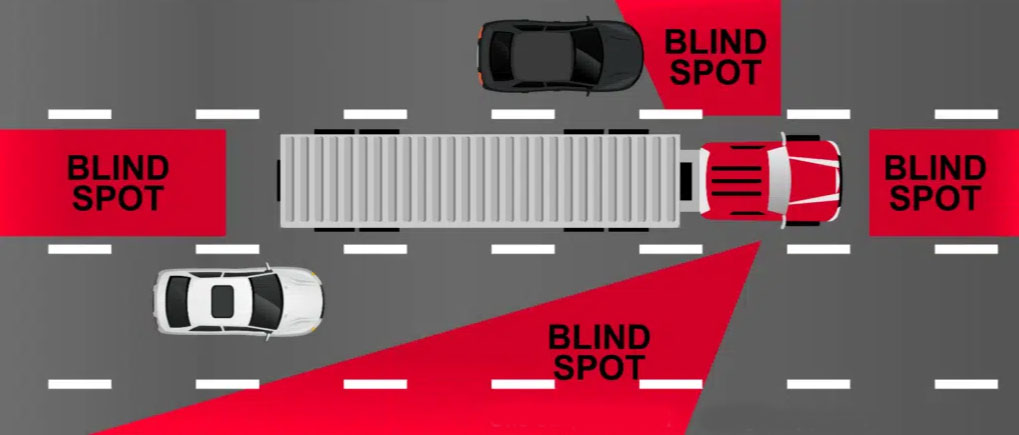
Blind Spot Accident Statistics
A significant number of truck crashes occur when a smaller vehicle in the travel lane lingers next to a truck in the fast lane. If the truck driver needs to change lanes, they may not see the vehicle next to them. Likewise, the other driver may not see the truck’s turn signal and know that they need to pass quickly.
Nearly 840,000 blind spot accidents occur each year in the United States, resulting in 300 deaths, according to the National Highway Traffic Safety Administration (NHTSA).
FMSCA’s Large Truck Crash Causation Study looked at a nationwide sample of 967 crashes, all of which involved at least one truck. In 14% of the accidents, at least one cause was the driver’s failure to check blind spots properly.
About 1 in 10 highway deaths occurs in a crash involving a large truck, according to the Insurance Institute for Highway Safety (IIHS). Each year about 384,000 crashes involve large trucks.
A study by the IIHS found that a combination of four crash avoidance features (blind spot detection, forward collision warning, lane departure warning, and vehicle stability control) has the potential to prevent 28% of all large truck crashes.
Of the four technologies, the IIHS said blind spot detection is the most promising new feature for preventing large truck crashes of any severity. Of the 97,000 annual large truck crashes involving intentional lane changes, blind spot detection technologies could prevent nearly 39,000 of them, including 2,000 that result in injury and 79 that cause deaths.
Blind Spot Monitoring Systems
Organizations in the industry continue to research ways to reduce blind spot accidents, and car manufacturers invest greater resources every year for improving blind spot and lane change warning systems in newer vehicles.
These commonly include ultrasound, radar, and camera technologies that visually and audibly warn drivers of danger when changing lanes or merging into traffic.
The European Union has currently issued three regulations regarding blind spot monitoring, which are UN ECE R151, UN ECE R158, and UN ECE R159. These three regulations became mandatory on July 6, 2022.
Some insurance companies even offer rate discounts to drivers who install blind spot monitoring devices in their vehicles.
According to Straits Research, the global market for blind spot monitoring systems was valued at $16.55 billion in 2024, and is expected to grow to $18.35 billion in 2025. It is anticipated that by the year 2033, the market for blind spot detection technology will reach $41.98 billion.
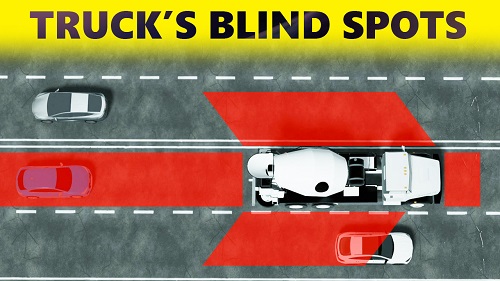
How Can Sinocastel Blind Spot Monitoring System Help
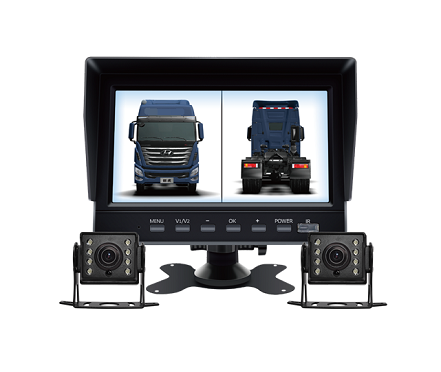
Specification of Monitor
| Panel Size | 7″ LED Digital Panel |
| Video System | NTSC / PAL Automatic detection |
| Resolution | 1,280 x (RGB) 720 Pixels |
| Brightness | 450 nits |
| Screen Mode | 16 : 9 Wide Screen |
| Field of View | Top 85° / Bottom 85° / Left 85° / Right 85° |
| Camera Input | 2-4CH |
| Dimmer | Automatic by CDS sensor or Manual Adjustment |
| Audio Output | 0.5W speaker |
| Impact Rating | 6G |
| Camera Connector | 4 Pin aircraft |
| Power Input | DC9-36V / Automatic Power On/Off by ACC |
| Operating Temp. | -20°C ~ +75°C / -4F° ~ +167F° |
| Storing Temp. | -30°C ~ +85°C / -22F° ~+185F° |
| Weight | 600g |





